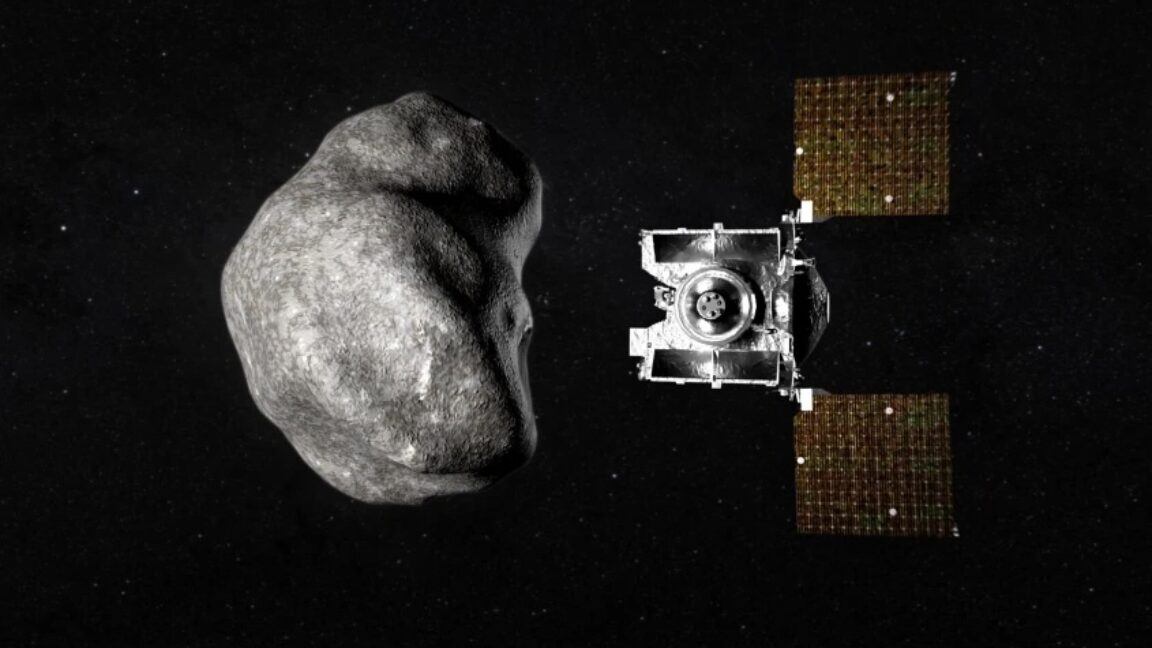Science
NASA Restores OSIRIS-APEX Mission, Others Remain Uncertain

NASA has reinstated the OSIRIS-APEX mission, which aims to study the asteroid Apophis during its close approach to Earth in 2029. This decision reverses the previous proposal by the Trump administration to terminate the mission as part of a broader strategy to cut NASA’s science budget by nearly 50%. OSIRIS-APEX, which repurposes the spacecraft from the earlier OSIRIS-REx mission, is now positioned to provide crucial insights into this near-Earth object.
Dani DellaGiustina, the principal investigator for OSIRIS-APEX at the University of Arizona, expressed relief over the mission’s reinstatement, stating, “We were called for cancellation as part of the president’s budget request, and we were reinstated and given a plan to move ahead in FY26 just two weeks ago.” The spacecraft is reported to be in good condition, retaining sufficient fuel for its upcoming exploration of Apophis, which measures about 1,100 feet (340 meters) in diameter and is expected to pass approximately 20,000 miles (32,000 kilometers) from Earth on April 13, 2029.
Funding Controversies and Legislative Efforts
The Trump administration’s budget proposal initially sought to eliminate 19 NASA science missions, raising concerns among scientists and lawmakers alike. In response, both the House and Senate have worked to preserve funding for NASA, with the Senate proposing to maintain the science division’s budget at $7.3 billion for Fiscal Year 2026. In contrast, the House has allocated $6 billion, still significantly more than the $3.9 billion suggested by the White House.
Despite ongoing negotiations, the federal government experienced a partial shutdown due to the lack of an agreed-upon budget. Nevertheless, NASA’s ground teams continue to operate current missions to prevent potential damage. While the House’s proposed budget could salvage much of NASA’s portfolio, it still falls $1.3 billion short of the previous year’s funding level, suggesting that some missions may face termination.
The OSIRIS-APEX mission benefitted from a dedicated allocation of $20 million in the House budget, a privilege not extended to many other missions marked for cancellation. The only other mission receiving similar support is the Magnetospheric Multiscale Mission (MMS), which investigates Earth’s magnetosphere. Lawmakers have also earmarked $20 million for MMS operations in 2026.
The Future of NASA’s Science Missions
Despite OSIRIS-APEX’s bright outcome, uncertainty looms for the remaining missions targeted for cuts. Earlier this year, NASA directed managers of these projects, including the Chandra X-ray Observatory and the MAVEN spacecraft, to prepare for potential shutdowns, indicating the administration’s serious intent to follow through with its budget cuts.
Concerns about the long-term viability of these missions are compounded by the loss of expertise as engineers shift focus to other projects. DellaGiustina noted that budget constraints have placed the OSIRIS-APEX science team “basically on hiatus” until 2027, delaying crucial planning and recalibration of science instruments. “We are definitely undermining our readiness,” she stated, emphasizing the impact on younger scientists involved in the mission.
The implications of these funding cuts are considerable. According to the Planetary Society, the missions threatened by cancellation represent a cumulative investment of approximately $12 billion. While advocates for NASA’s science program have voiced their concerns in Congress, the uncertainty regarding funding remains a source of anxiety for researchers and engineers alike.
Former principal investigator of the MAVEN Mars mission, Bruce Jakosky, highlighted the challenges posed by the administration’s reluctance to allocate funds even if Congress approves a budget. “Even if the budget that comes out of Congress gets signed into law, the president has shown no reluctance to not spend money that has been legally obligated,” he explained.
As discussions continue and the future of various missions hangs in the balance, the scientific community remains hopeful that public pressure will lead to a resolution that safeguards NASA’s vital research programs. The outcome of this budget saga will ultimately shape the trajectory of U.S. space science for years to come.
-

 Science3 months ago
Science3 months agoToyoake City Proposes Daily Two-Hour Smartphone Use Limit
-

 Top Stories3 months ago
Top Stories3 months agoPedestrian Fatally Injured in Esquimalt Collision on August 14
-

 Health3 months ago
Health3 months agoB.C. Review Reveals Urgent Need for Rare-Disease Drug Reforms
-

 Technology3 months ago
Technology3 months agoDark Adventure Game “Bye Sweet Carole” Set for October Release
-

 World3 months ago
World3 months agoJimmy Lai’s Defense Challenges Charges Under National Security Law
-

 Lifestyle3 months ago
Lifestyle3 months agoVictoria’s Pop-Up Shop Shines Light on B.C.’s Wolf Cull
-

 Technology3 months ago
Technology3 months agoKonami Revives Iconic Metal Gear Solid Delta Ahead of Release
-

 Technology3 months ago
Technology3 months agoApple Expands Self-Service Repair Program to Canada
-

 Technology3 months ago
Technology3 months agoSnapmaker U1 Color 3D Printer Redefines Speed and Sustainability
-

 Technology3 months ago
Technology3 months agoAION Folding Knife: Redefining EDC Design with Premium Materials
-

 Business3 months ago
Business3 months agoGordon Murray Automotive Unveils S1 LM and Le Mans GTR at Monterey
-

 Technology3 months ago
Technology3 months agoSolve Today’s Wordle Challenge: Hints and Answer for August 19









